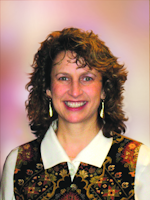BIOMEDICAL IMAGING, TREATMENT, AND RESEARCH: CCNY celebrates advances in biomedical optics
The Advances in Biomedical Optics and Photonics event (November 12, 2014) held at The City College of the City University of New York (New York, NY) included a tour of the Institute for Ultrafast Spectroscopy and Lasers (IUSL). The event gave attendees plenty of opportunity to see research setups firsthand, and ask questions of scientists working on next-generation instruments and techniques.
City College Provost Maurizio Trevisan, MD, MS, who has vast experience in leading healthcare education, was on hand to help celebrate IUSL's photonics-based breakthroughs in biomedical imaging, diagnosis, and treatment. Trevisan mentioned that City College plans to launch a medical school—which presumably would leverage IUSL discoveries. IUSL founder Robert Alfano, Ph.D., then set the stage for student demonstrations. He explained how all research at IUSL is done by teams that include senior staff along with students at three levels: graduate, undergraduate, and high school.
Attendees who toured the labs saw notable demonstrations of technologies and applications by equally impressive researchers. Among the applications were optical biopsy using three newly found optical windows (by Laura A. Sordillo), leveraging of the recent identification of increased tryptophan as a biomarker of aggressive cancer (by Lin Zhang), progress in laser tissue welding (by Sabrina Grech), and deep imaging of brain tissue using two-photon microscopy (by Lingyan Shi, Ph.D.). The demos also included explorations of tools for advanced biomedicine, including complex light (by Thien An Nguyen), an exciting discovery with rich opportunity for biomedical applications; and supercontinuum white light (by Zabir Hossain and Yisa Rumala, Ph.D.), which Alfano discovered in 1970 and has recently gained attention in life sciences. Lukas Lindwasser also presented on near-infrared supercontinuum for deep tissue and brain imaging. Much of the work has implications for detection and treatment of cancers: Wubao Wang, Ph.D., described a new instrument for prostate cancer detection, while Mikhail Sharonov, Ph.D., demonstrated a handheld skin-scanning system for melanoma detection.

Barbara Gefvert | Editor-in-Chief, BioOptics World (2008-2020)
Barbara G. Gefvert has been a science and technology editor and writer since 1987, and served as editor in chief on multiple publications, including Sensors magazine for nearly a decade.
